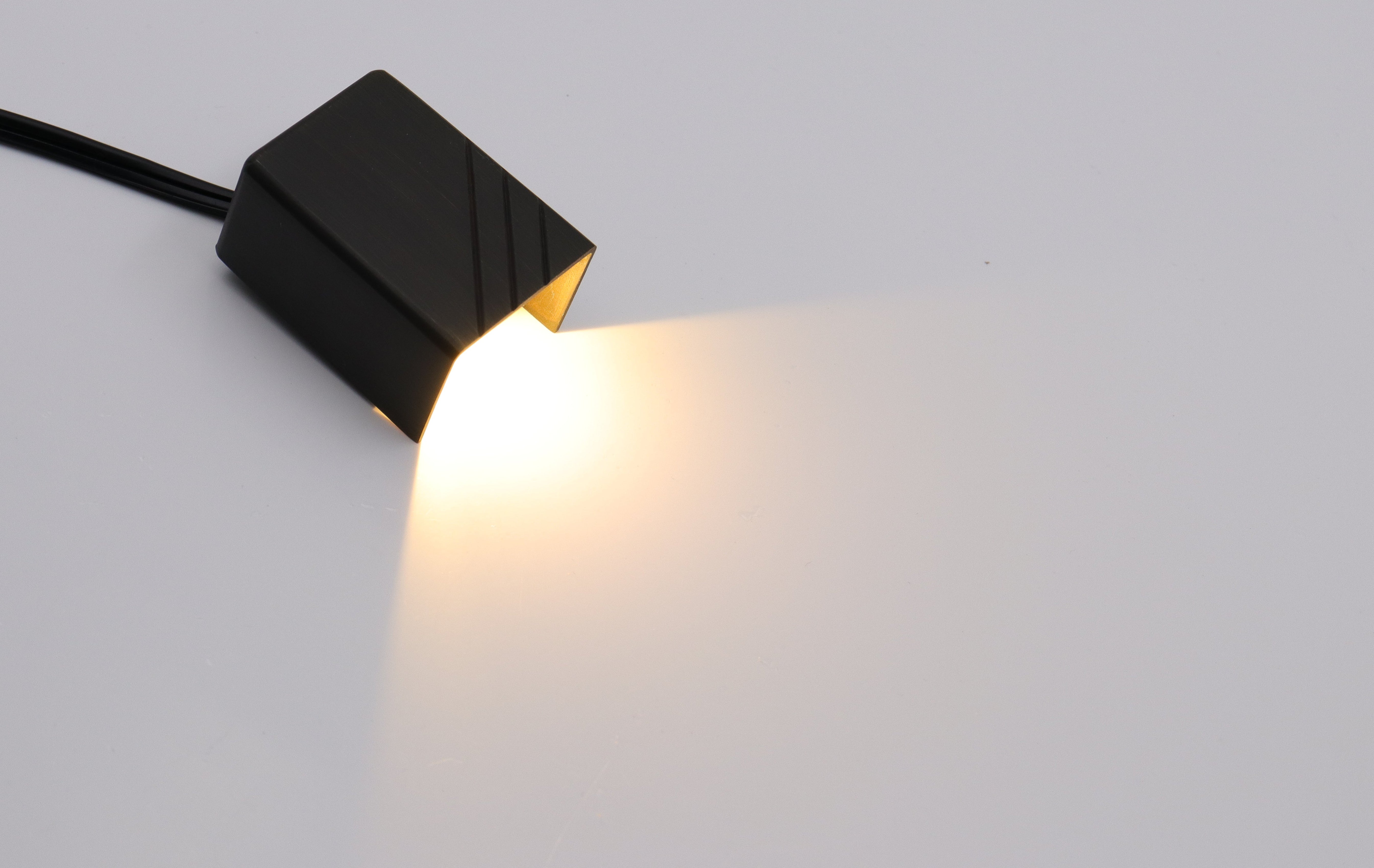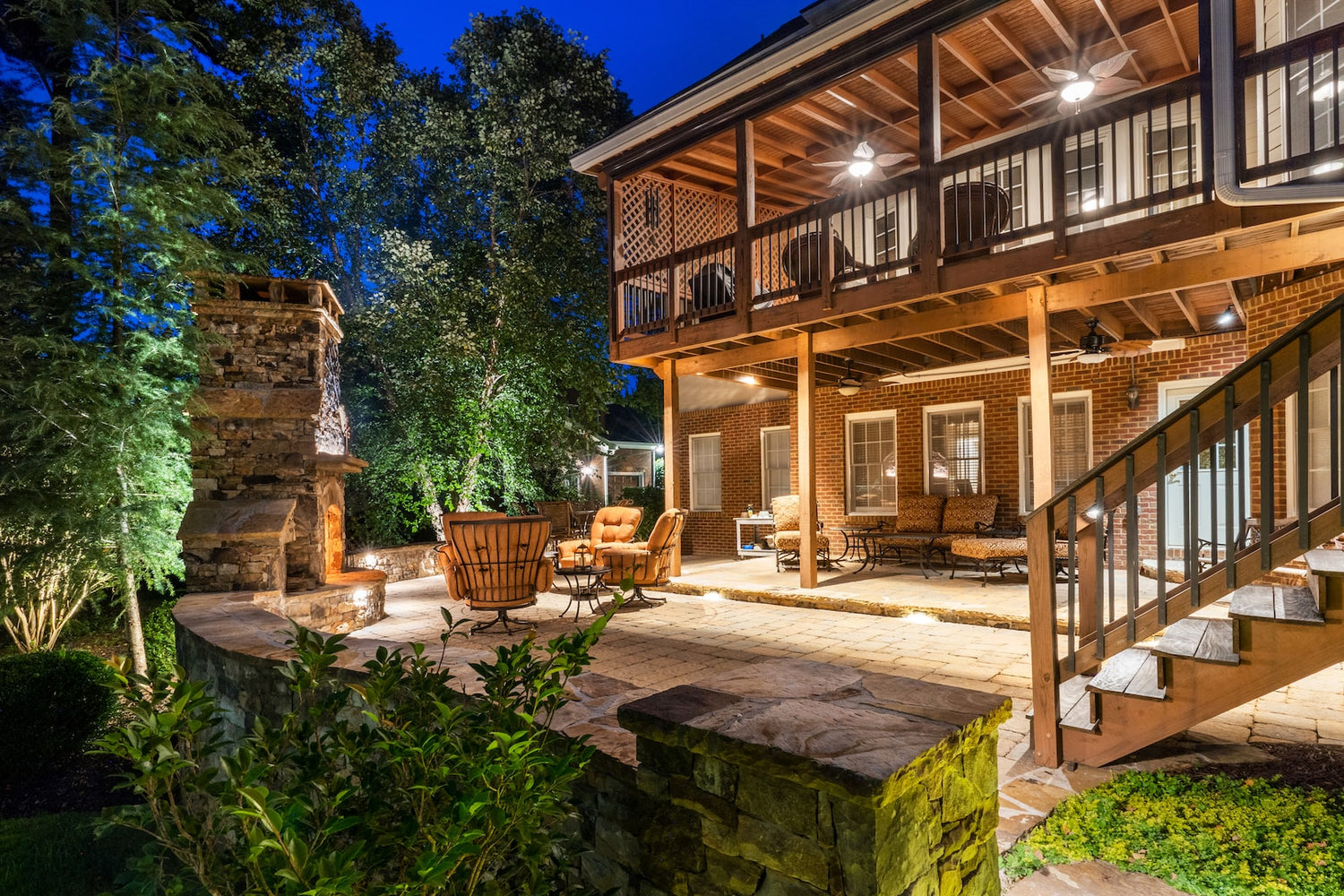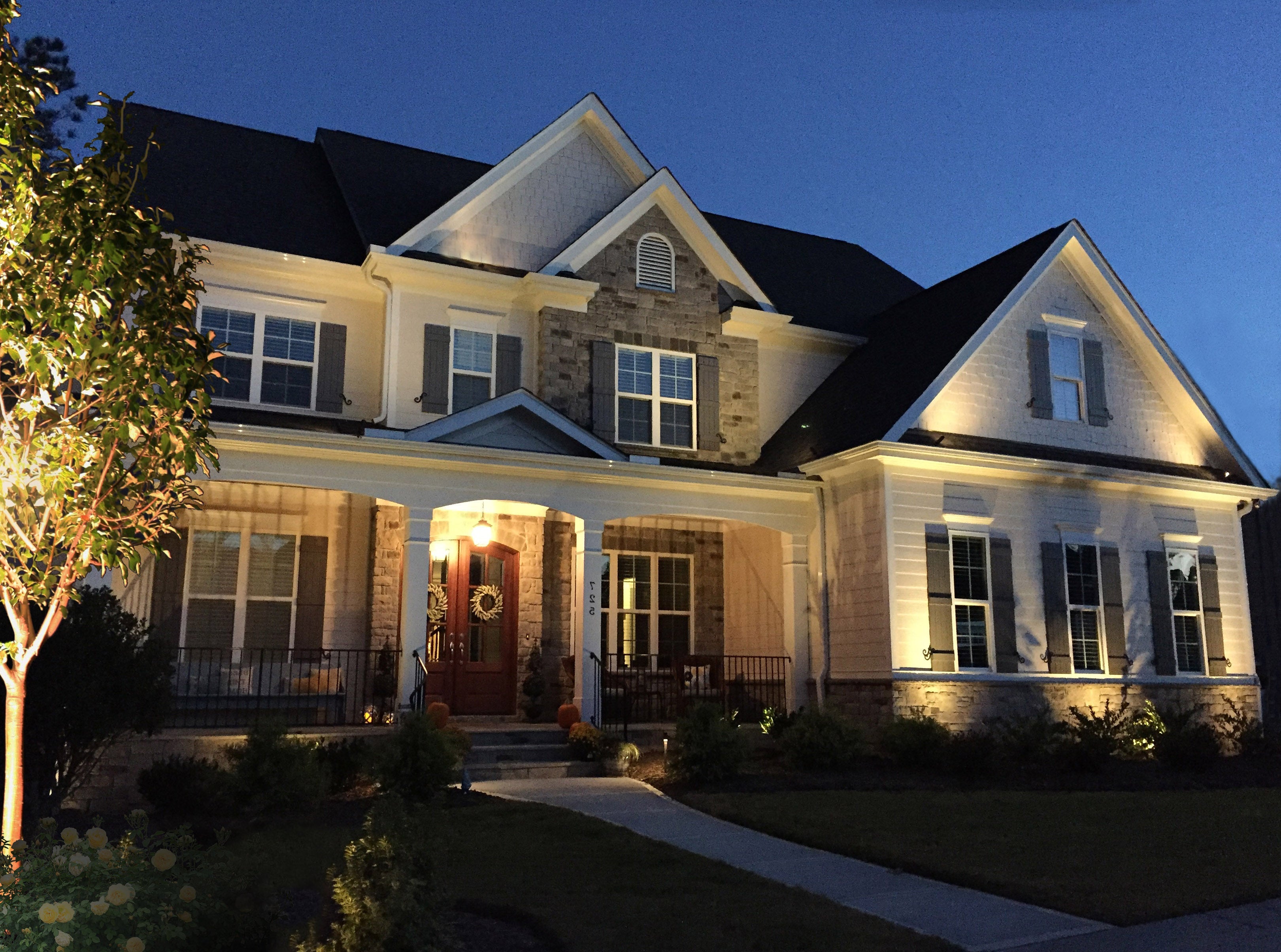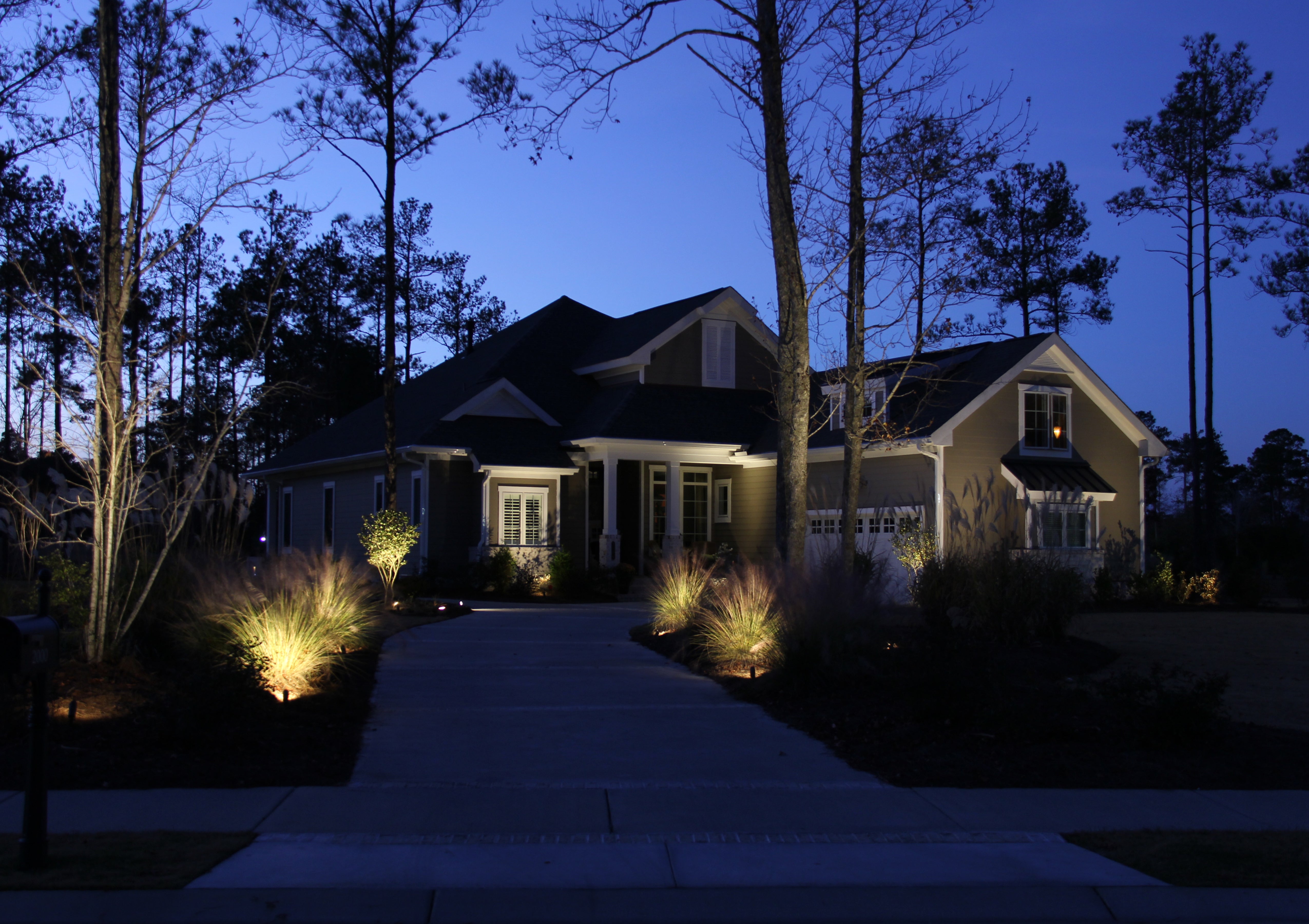| Comparison | Hardscape Lighting | Softscape Lighting |
|---|---|---|
| Lighting Types | Utilizes robust fixtures designed for solid surfaces, such as LED strip lights for under-step illumination, spotlights, and path lights for walkways. | Employs fixtures like spike lights, floodlights, and hanging lights, designed to highlight plants and gardens. |
| Purpose | Enhances outdoor area beauty and functionality, ensures safe movement, highlights architectural details, increases visibility. | Elevates natural landscape beauty, improves safety in garden areas, creates an inviting atmosphere, mimics natural light. |
| Design | Meticulous approach complementing hard materials, integrates subtly with existing hardscape. | Inspired by nature, aims to feel like an extension of the landscape, focuses on enhancing garden's dynamic beauty. |
| Installation | Often requires planning in construction phase, may involve drilling and running conduit. | Less invasive, fixtures easily inserted into ground, adjustments made as plants grow without significant landscape modification. |
| Cost | More expensive, costs range from $100 to $300 per fixture including labor and materials. | More affordable, fixture costs range from $20 to $200, simpler installation allows for lower expenses. |
| Maintenance | Focuses on checking fixture condition, involves regular checks for damage, and requires periodic cleaning. | More hands-on, requires adjustments for plant growth and seasonal changes, involves replacing bulbs and cleaning lenses. |
Hardscape Lighting
HARDSCAPE Lighting is the illumination of the non-living elements within a landscape. These elements include structures like patios, decks, walls, pathways, and outdoor kitchens. Hardscape lighting accentuates these features, improves safety by illuminating pathways, and extends the usability of outdoor spaces after dark.
Softscape Lighting
Softscape Lighting, in contrast, illuminates the living parts of a landscape. This encompasses trees, plants, gardens, and flower beds. Softscape lighting is used to highlight the beauty of the natural elements, create ambiance, and can also play a role in safety by illuminating uneven terrain.
Lighting Types
Hardscape lighting often utilizes fixtures that are robust and designed to be mounted on solid surfaces. These include LED strip lights for under-step illumination, spotlights to highlight texture on walls, and path lights for walkways. The fixtures are typically made of materials resistant to weather and wear, such as stainless steel or heavy-duty plastic.
Softscape lighting tends to use fixtures that are either staked into the ground or designed to highlight the organic shapes and forms of plants. Spike lights, floodlights, and even hanging lights are common in softscaping to create dramatic effects or gently wash a garden area with light.

Purpose
Hardscape Lighting:
- Enhances beauty and functionality of outdoor areas.
- Illuminates paths and walkways for safe movement after dark.
- Highlights architectural details like textured stone walls or modern decks.
- Extends visibility into the evening, increasing the usability of patios, decks, and other amenities.
Softscape Lighting:
- Elevates the natural beauty of the landscape.
- Can improve safety by lighting darker garden areas and uneven terrain.
- Creates an inviting atmosphere that draws people outside.
- Uses strategic placement to mimic natural moonlight, transforming gardens into tranquil spaces for relaxation or gatherings.
Design
Hardscape Lighting Design:
- Meticulous and measured approach to fixture choice and placement.
- Designed to complement the landscape's hard materials and structured lines.
- Integrates lighting seamlessly with existing hardscape, aiming for subtlety.
- Uses lights to enhance, not overwhelm, highlighting the natural beauty and functionality of built environments.
Softscape Lighting Design:
- Inspired by nature, aiming for lighting to feel like a natural landscape extension.
- Employs lighting techniques to mimic moonlight or sunlight filtering through branches.
- Placement considers interaction with plant movement and texture, enhancing garden's dynamic beauty.
- Focuses on subtlety, adding depth and drama without making light sources obvious.
- Illuminates the garden to create an enchanting and natural atmosphere.
Installation
The installation of hardscape lighting often requires planning during the construction phase, especially for integrated fixtures. It can involve drilling into hardscape materials, running conduit, or installing surface-mounted fixtures.
Softscape lighting installation is generally less invasive. Most fixtures are designed for easy insertion into the ground, and adjustments can be made without needing to modify the landscape significantly. However, care must be taken not to damage root systems, and adjustments may be needed as plants grow.
Cost
Hardscape lighting installations are more expensive, with costs typically ranging from $100 to $300 per fixture, including labor and materials. On the other hand, softscape lighting is more affordable, with fixture costs ranging from $20 to $200, and simpler installation often allows for lower overall expenses.
Maintenance
Hardscape Lighting Maintenance:
- Focuses on checking the physical condition and functionality of fixtures.
- Involves regular checks for damaged or burnt-out bulbs.
- Requires periodic cleaning to remove dirt, leaves, or snow that may obscure light.
- Generally less labor-intensive due to fixture durability and design for outdoor conditions.
Softscape Lighting Maintenance:
- More hands-on due to the dynamic nature of the illuminated living landscape.
- Requires adjustments as plants grow and seasons change to maintain aesthetics and function.
- May involve repositioning lights or adjusting illumination angles for plant growth or seasonal changes.
- Includes replacing bulbs and cleaning lenses to ensure ongoing quality of light.
Final Words
Both hardscape and softscape lighting are essential for creating a well-rounded, functional, and visually appealing outdoor space. Understanding their differences, from the types of lights used to their installation and maintenance, allows homeowners, designers, and landscapers to make informed decisions that enhance the beauty and functionality of their landscapes. Whether illuminating a stone pathway or casting a soft glow on a blooming garden, the right lighting can transform any outdoor area into a captivating retreat. For more comprehensive insights on how to elevate your curb appeal with strategic landscape lighting, check out this detailed guide on Unlocking Curb Appeal Magic with Landscape Lighting.

Read More
- Brighter Nights, Safer Home: Unlock Landscape Lighting Benefits!






Leave a comment
All comments are moderated before being published.
This site is protected by hCaptcha and the hCaptcha Privacy Policy and Terms of Service apply.